
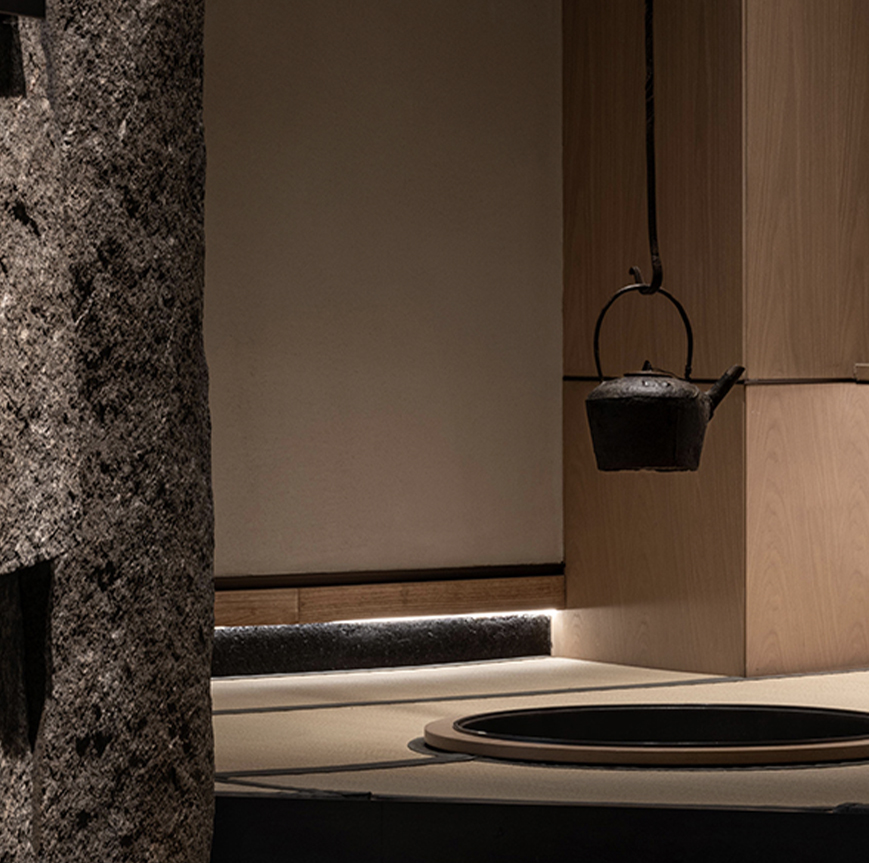
無雙·茶事
Wushuang · Sipping Tea
北京国际饭店
Words by 無雙·茶事 | Published on 10-04-2023 | Design by IN.X |
本是日疏雨生凉,山光满几,殊有幽兴也。
——倪瓒《淡室诗》
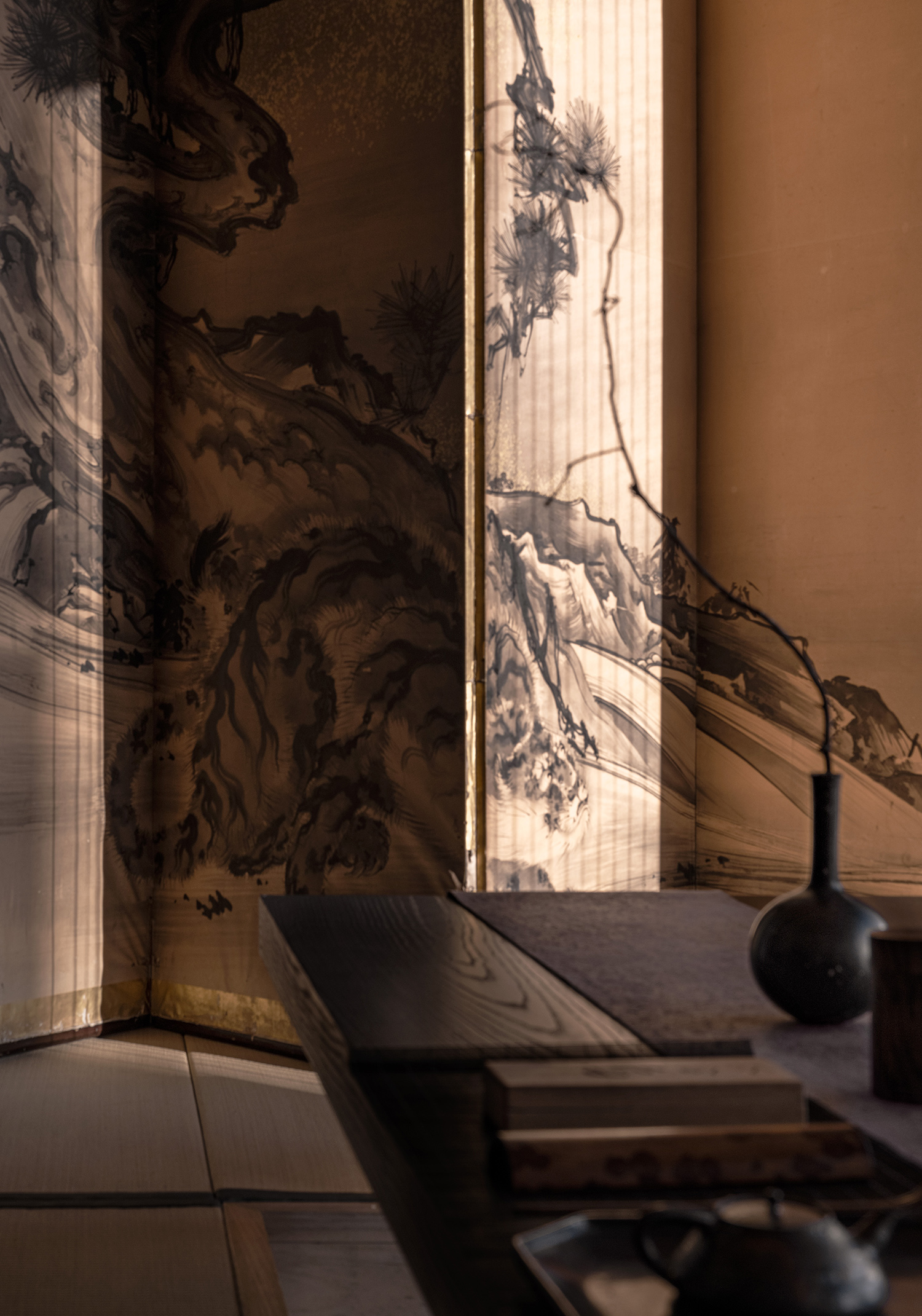
去年9月,北京国际饭店一层内無雙·茶事正式对外营业,IN.X屋里门外吴为带领团队打磨近一年完成本作。
Last September, Wushuang · Sip Tea officially opened to the public. Situated on the first floor of the Beijing International Hotel, the project is a result of the one-year hard work of Wu Wei and his team at IN.X Space Design.
略加粗算,我们和茶的渊源已逾千年,无论从时间还是地理的维度,多元是中国茶事迁延流变中的显要特征,而这也使中国茶的饮法有了更多值得探询演绎的空间,正是在茶文化宽容辽阔的属性下,無雙·茶事作为泛餐饮空间代表得以构建——远可回溯人文雅趣,照天地心;近能承载雀跃先锋的时代生活,恣意鲜活。
The relationship between humankind and tea can be dated back to more than a thousand years ago. In terms of both time and location, diversity has been a prominent feature in the evolution history of Chinese tea, which makes its way of tasting more worthy of exploration. It is the tolerance and extensiveness of the tea culture that allows for the creation of Wushuang · Sip Tea as an icon of a hospitality space, representing both the elegant and artistic taste of the ancient times and the pioneering and lively lifestyle of the modern times.
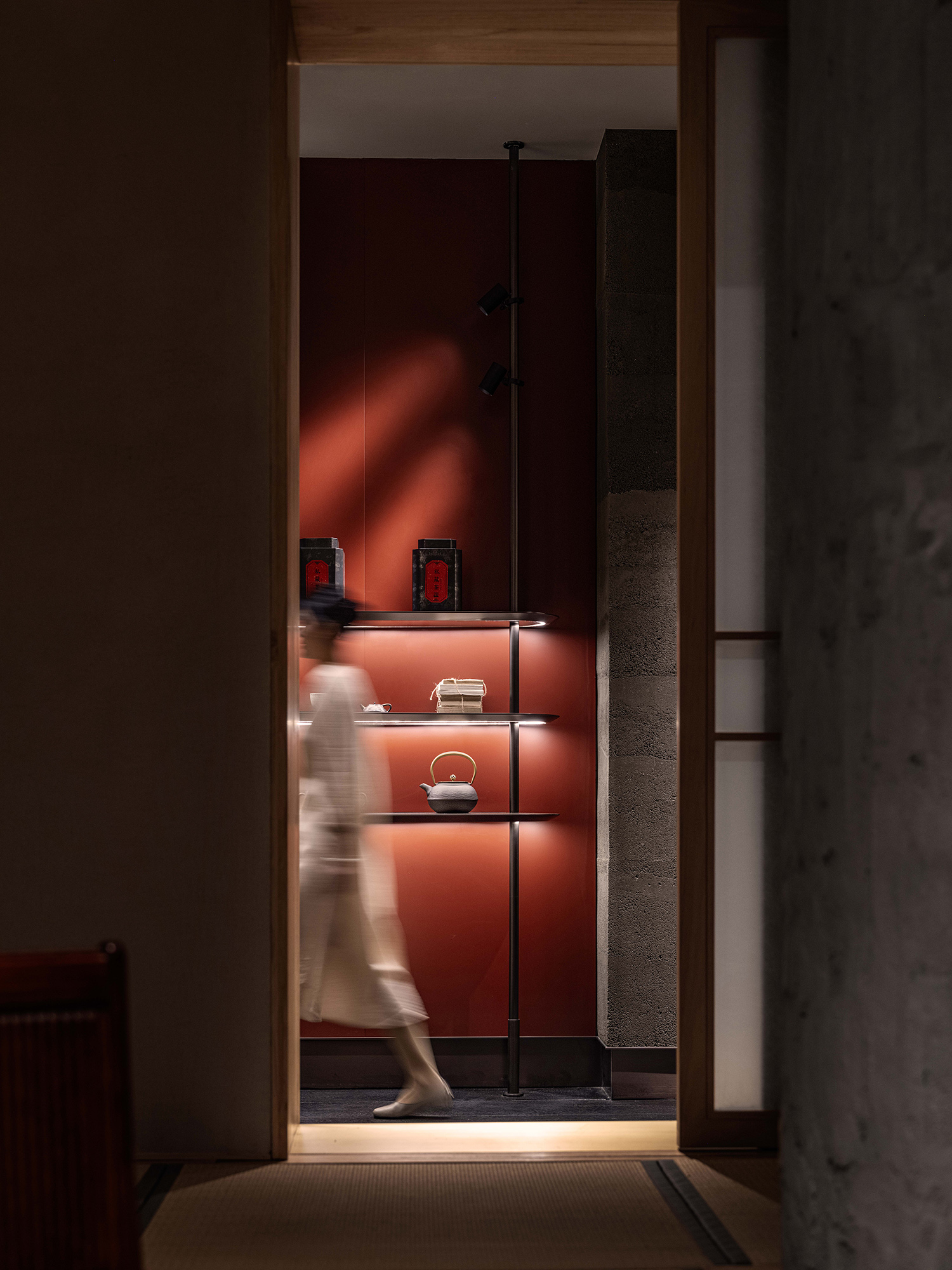

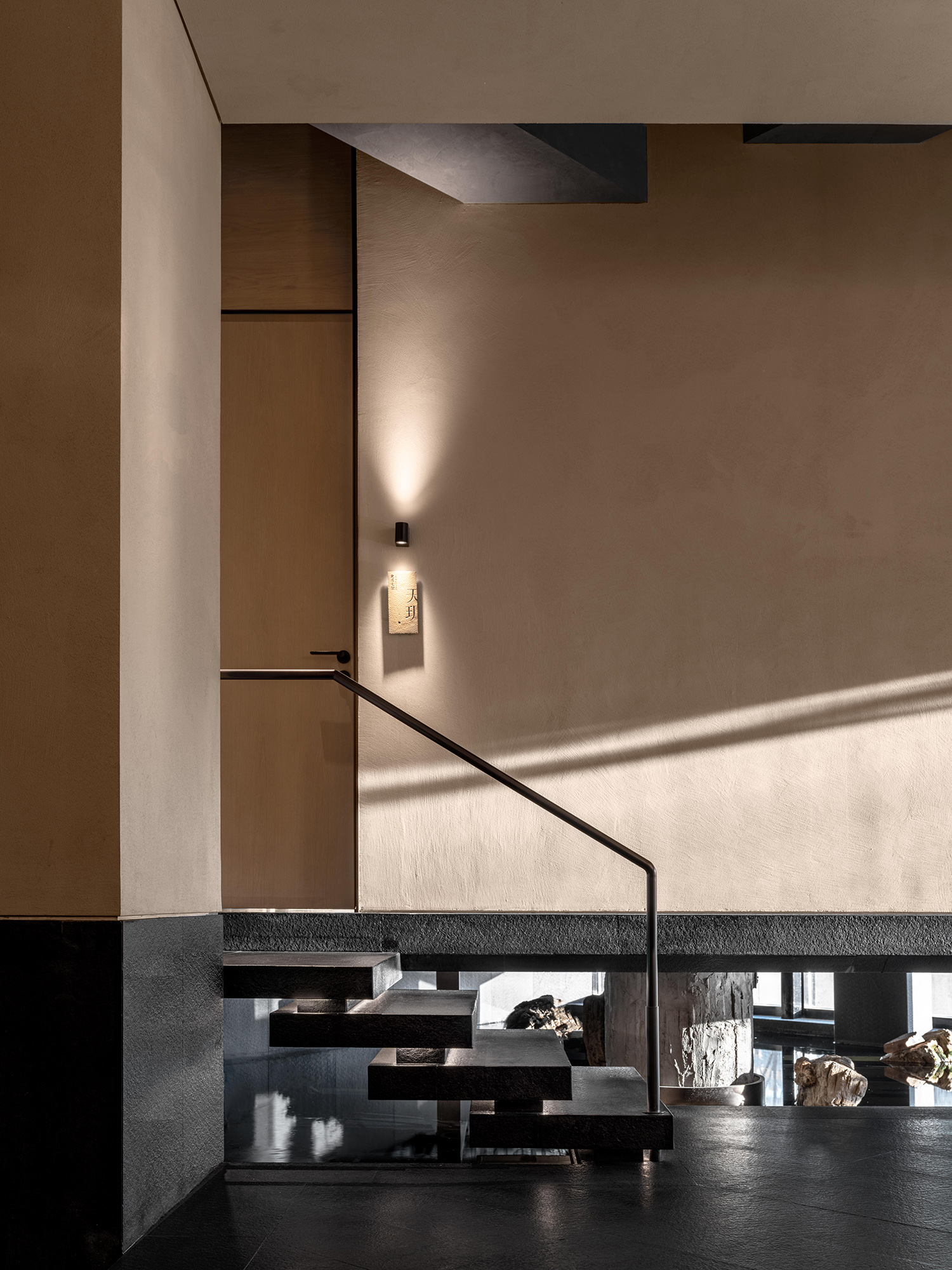
设计师希望贴合湘菜品类文化完成在地化的空间构建,并创出潇湘码头能够深入人心的品牌形象,这一策略引导了整体空间构建。
The designer hopes to complete the localized space construction in line with the Hunan cuisine category culture, and create a brand image of Xiaoxiang Wharf that can be deeply rooted in the hearts of the people. This strategy guides the overall space construction.
茶事风情卷:造闲情,得自在
The Charm of Tea Tasting: Pursuit of Comfort and Coziness as a Leisure Activity
从晋朝“提壶弼茗”的茶摊儿到唐朝开元年第一间“茗铺”形成,茶文化纵然和文人风雅、省身参禅紧密关联,但“闲情”是茶文化最宏大也最亲切的生活底色。对此我们自古便有见解——“明窗净几,佳客小姬,访友初归,风晴日和。”
到今天,一个想对山水、人文、市井都聊表心意的茶空间,对闲情佳境的塑造也是最要紧的。
IFrom tea stalls with the practice of sipping tea while carrying teapots in the Jin Dynasty to the first teahouse in the Kaiyuan era of the Tang Dynasty, tea tasting has always been closely linked with the elegant taste, self-reflection and meditation of the men of letters. In the meantime, it is also considered the most accepted way of life among the ordinary people. According to the famous book Treatise on Tea in the Ming Dynasty by Xu Cishu, the most ideal scenarios for tea tasting include- "when the window is clear and the table clean, the guest is a young and fair lady, someone returns shortly from visiting friends, the breeze is gentle and the sun is radiant."
Even today, a teahouse that wishes to pay tribute to nature, art and worldly life will also underscore the creation of vibes for leisure.
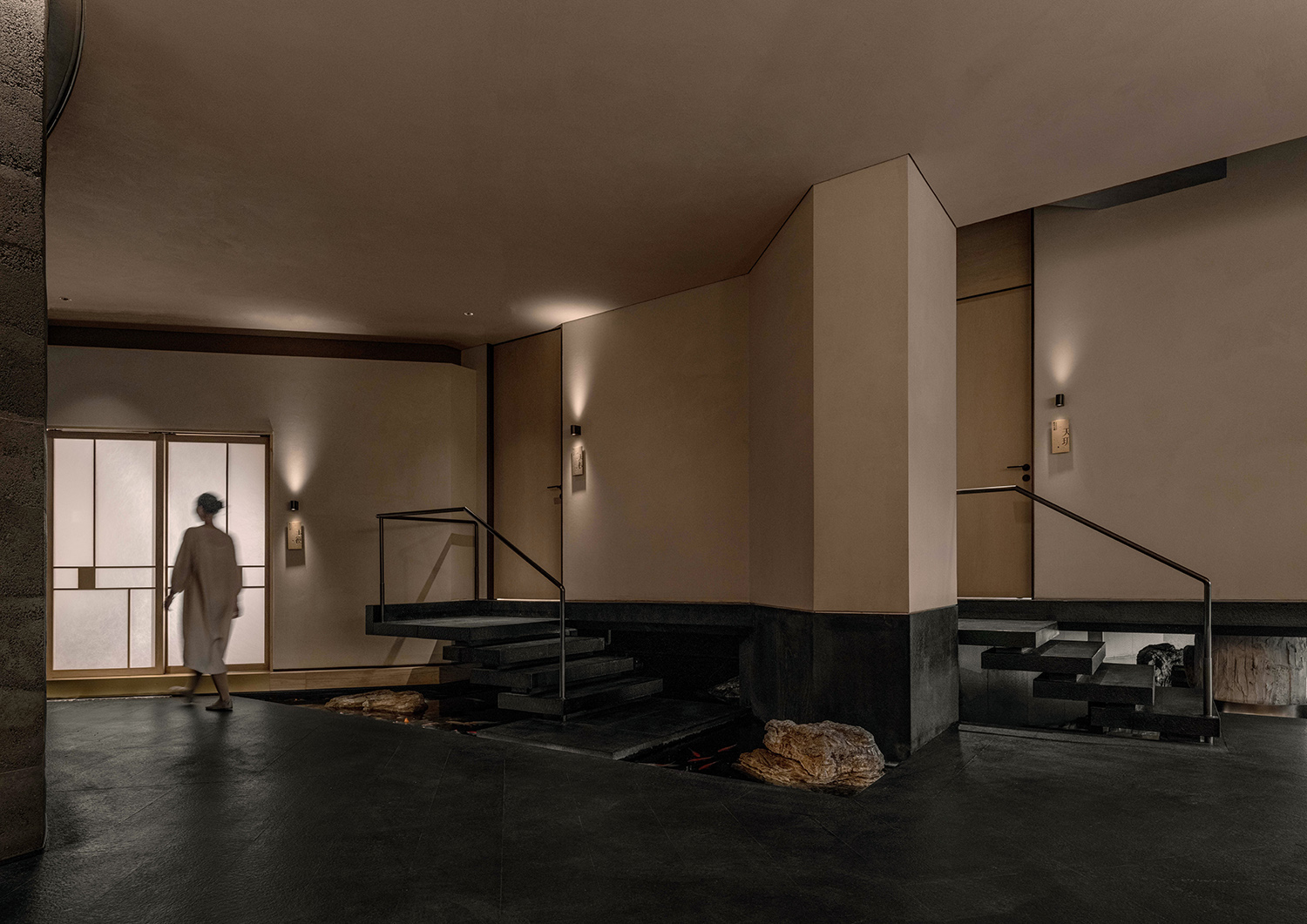
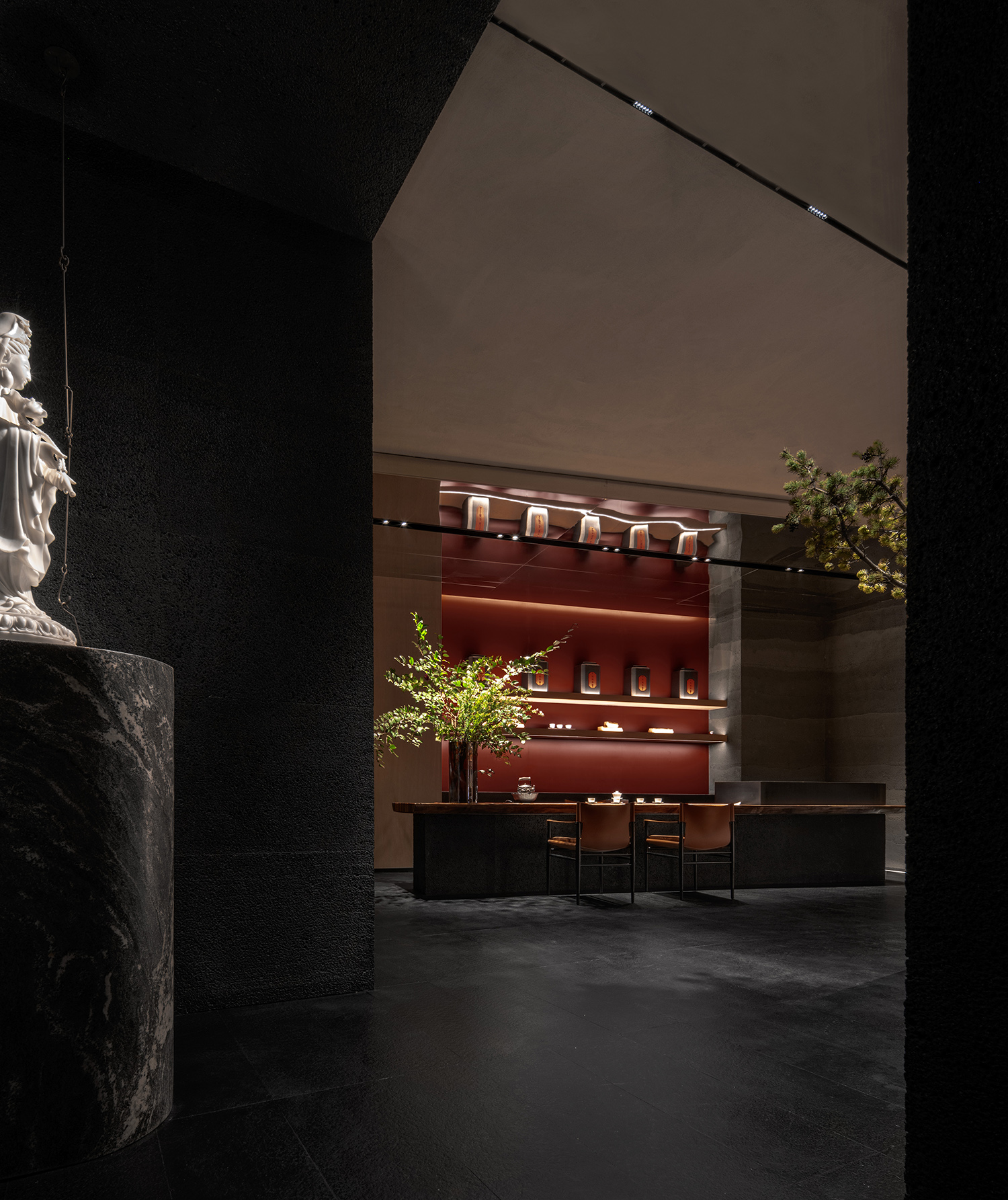
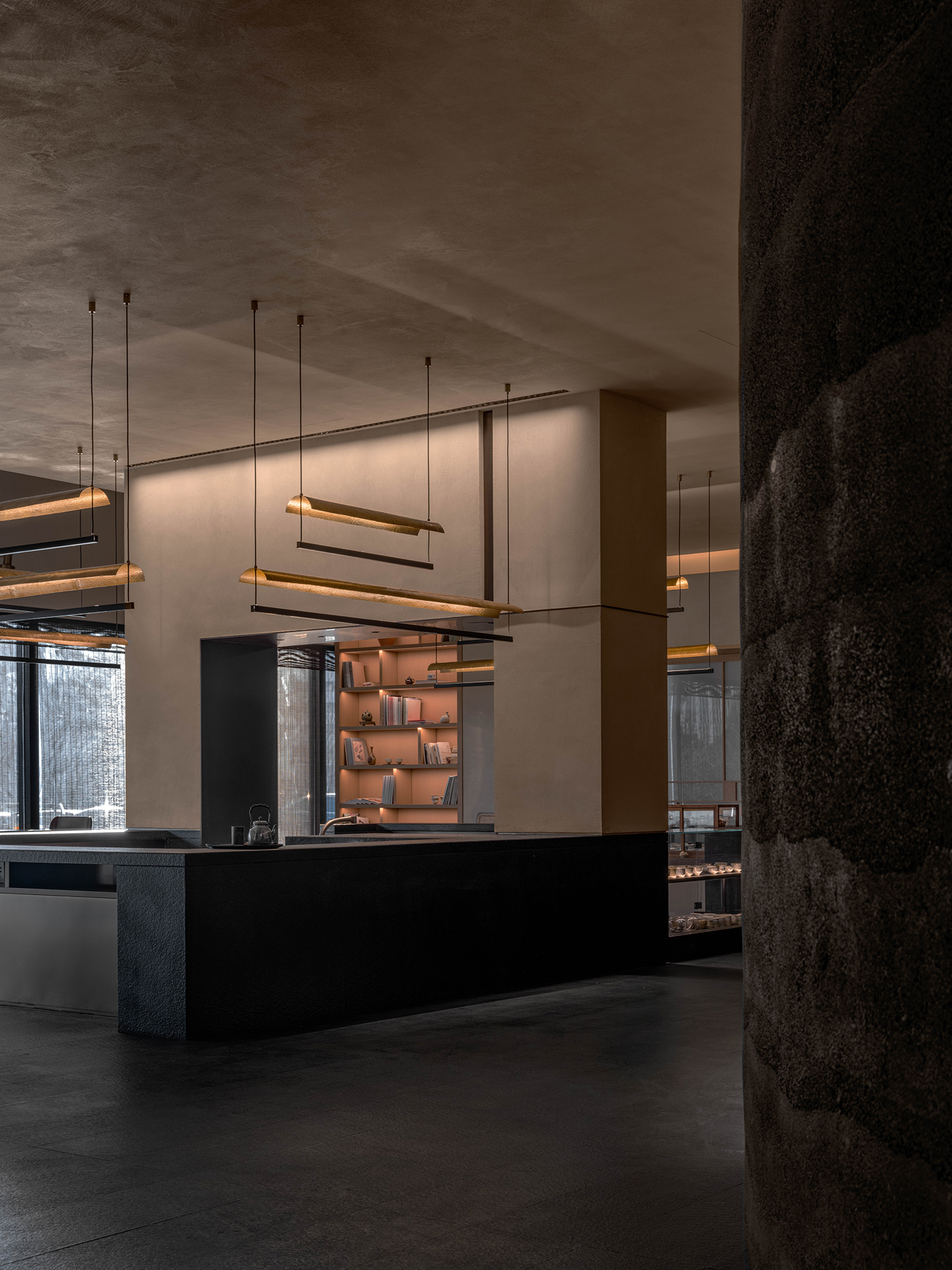
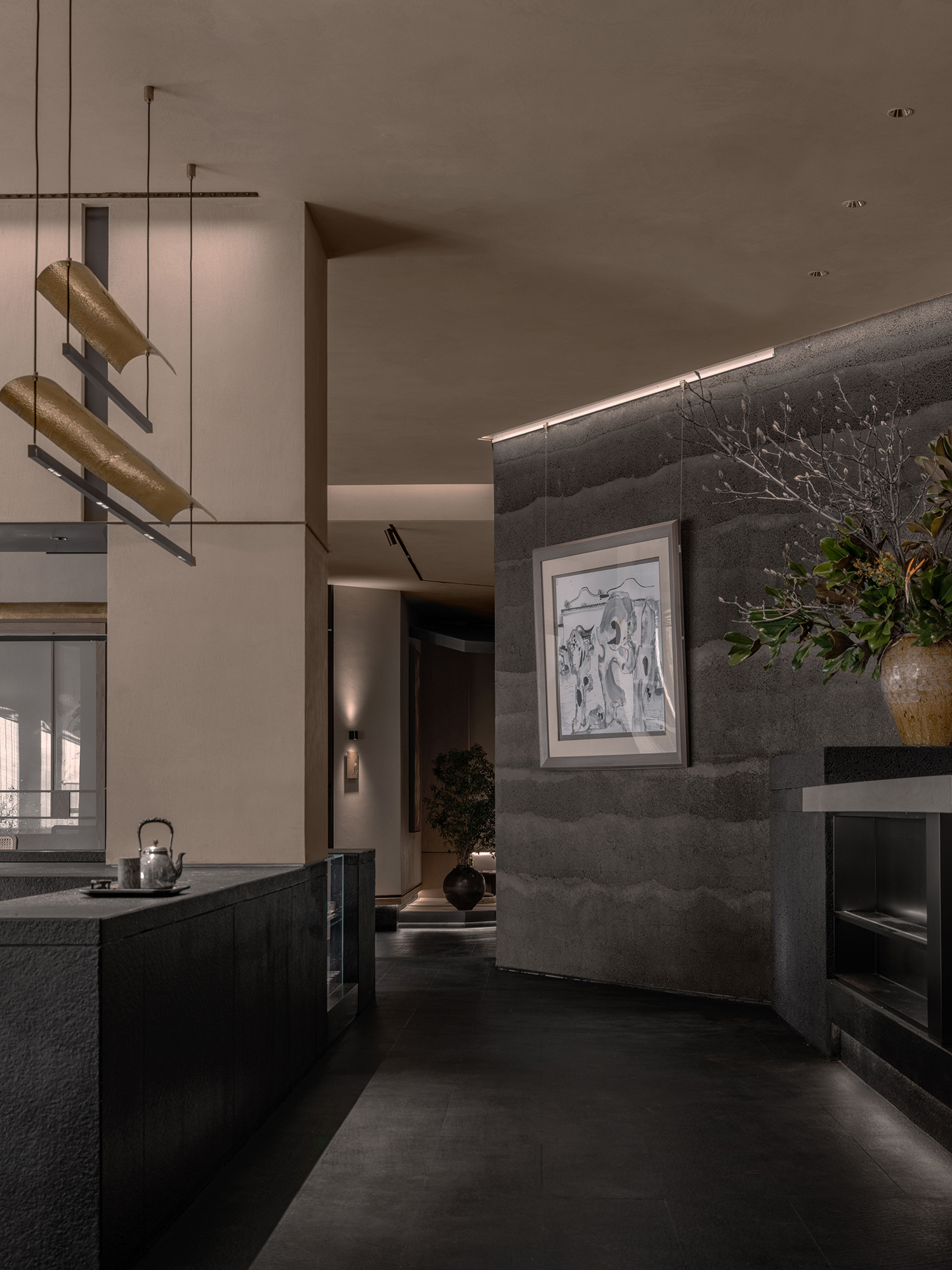
线条简洁的回型中央茶吧集合了茶花水景、六艺赏玩、多功能区等茶事体验,可理解为一座丰茂怡然的茶事岛屿。吧台与周围小座、廊道、包房等则作峰回路转式的空间安排,就像古人寻山访友,“寻”的乐趣是第一等的。
The sleek loop tea counter in the center serves as an island that integrates functions including flower waterscape, appreciation of six arts, multi-functional area and beyond. The counter, the surrounding seats, corridor, private tearooms, and more are arranged in a zigzagging way, reminiscent of the experience ancestors had while exploring mountains and visiting friends, in which the fun of "exploration" was second-to-none.
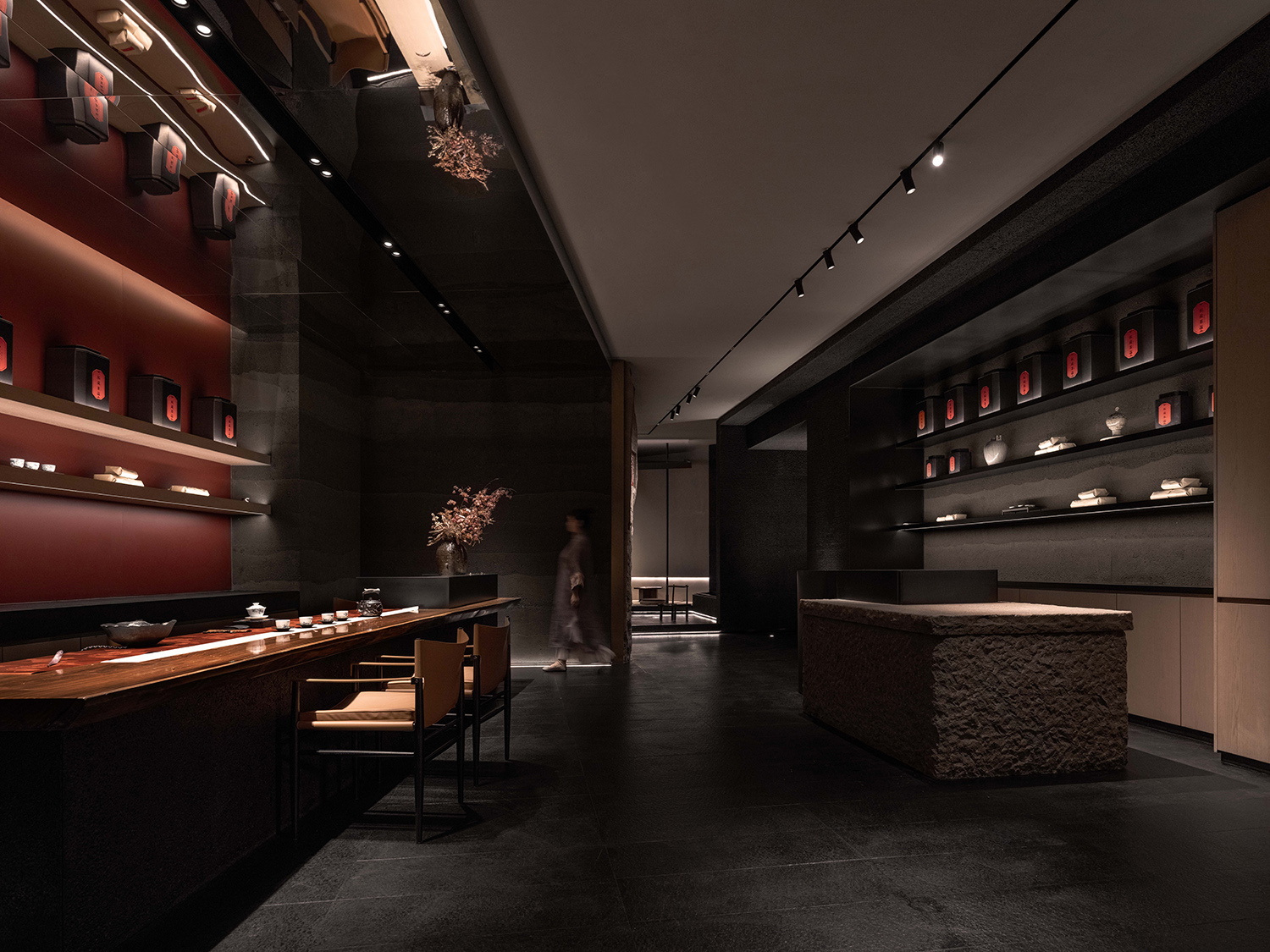
依据空间布局,夯土、洞石板、麻石、肌理漆复现了自然的原始稚拙,使室内的“山林”古朴简素。此外,结构线条简洁,几笔勾勒建筑造型,控制守拙与精雕的比例以成全当代感。空间由暗至明,色彩从深沉墨色向雾白层层晕染,朱红姜黄两色适时点缀,弱水萦绕盘桓,托起净室。
In terms of the layout, rammed earth, travertine slabs, granites, and texture paint revived the primitivity of the nature, making the indoor "mountain forest" simple and antique. In addition, the neat structural lines highlight the architectural silhouette, and the rough decoration and refined carving are well-proportioned to deliver a sense of modernity. The paint color transits from ink blue to foggy white, dotted with vermilion red and ginger yellow, creating a blurred and distinct effect.
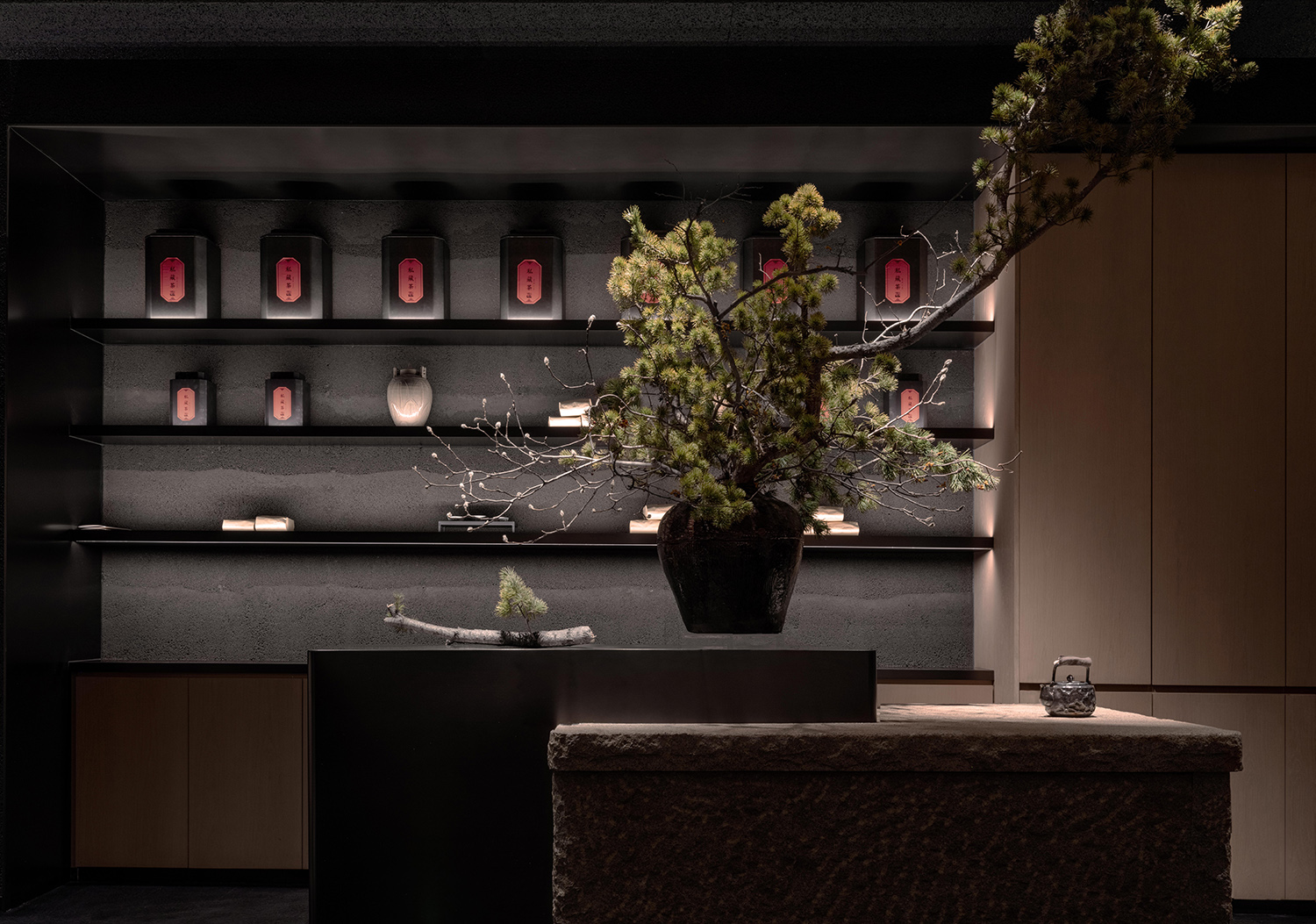
设计的观想:空而充裕,格物致远
Design concept: Simplicity Enriched by Indoor Landscaping
茶味清幽,所以清晰的表达往往以洁净简素的环境来成全,古今大同。而承载茶事的乐趣则要从“物”出发,再向远去。
Ever since ancient times, tea tasting is believed to deliver the ultimate pallet experience in a simple and clean environment, and the pleasure of the practice is reliant on and enriched by indoor landscaping.

自入口起,整块山石劈凿挂墙,将城市推入山林。由此进入,夯土、木饰板、深色肌理漆将空间收至静谧幽深,茶吧与转角火塘茶道区自空间浮出。回廊向内,古朴山石踏步,茶室设计略高于地面,如林间茶寮浮于草木山石上。接下来,松竹、屏风、卷轴、瓶插、琴、石、茶器逐一呈现,对器物更细化的讲究从《长物志》中便有体现,从实用出发,不渉粗浮之气。
At the entrance, an entire mountain rock is chiseled and hung on the wall, unfolding a forest scene in front of the city dwellers. Starting from there, the rammed earth, wood veneer, and dark texture paint make the space deep and serene, and the tea counter and tea ceremony area around the corner emerge in a natural way. The corridor, paved with mountain rocks, extends all the way inward, and the tea rooms are designed to be slightly higher than the ground, looking as if they are floating in the wilderness. Then, pines, bamboo, screens, scrolls, vase, ancient Chinese music instrument, rocks, and tea wares are presented one by one, all being functional without seeming flamboyant.
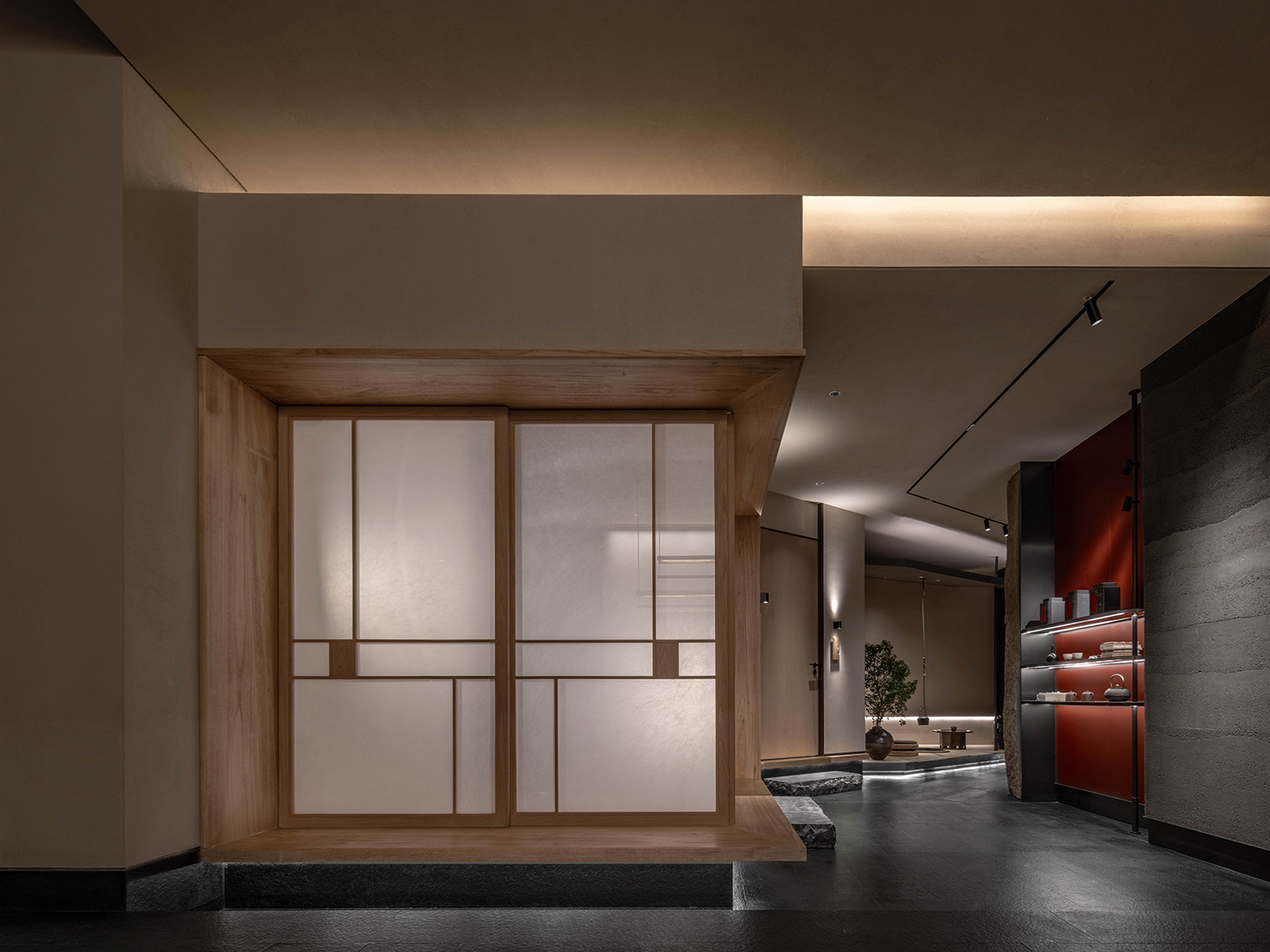
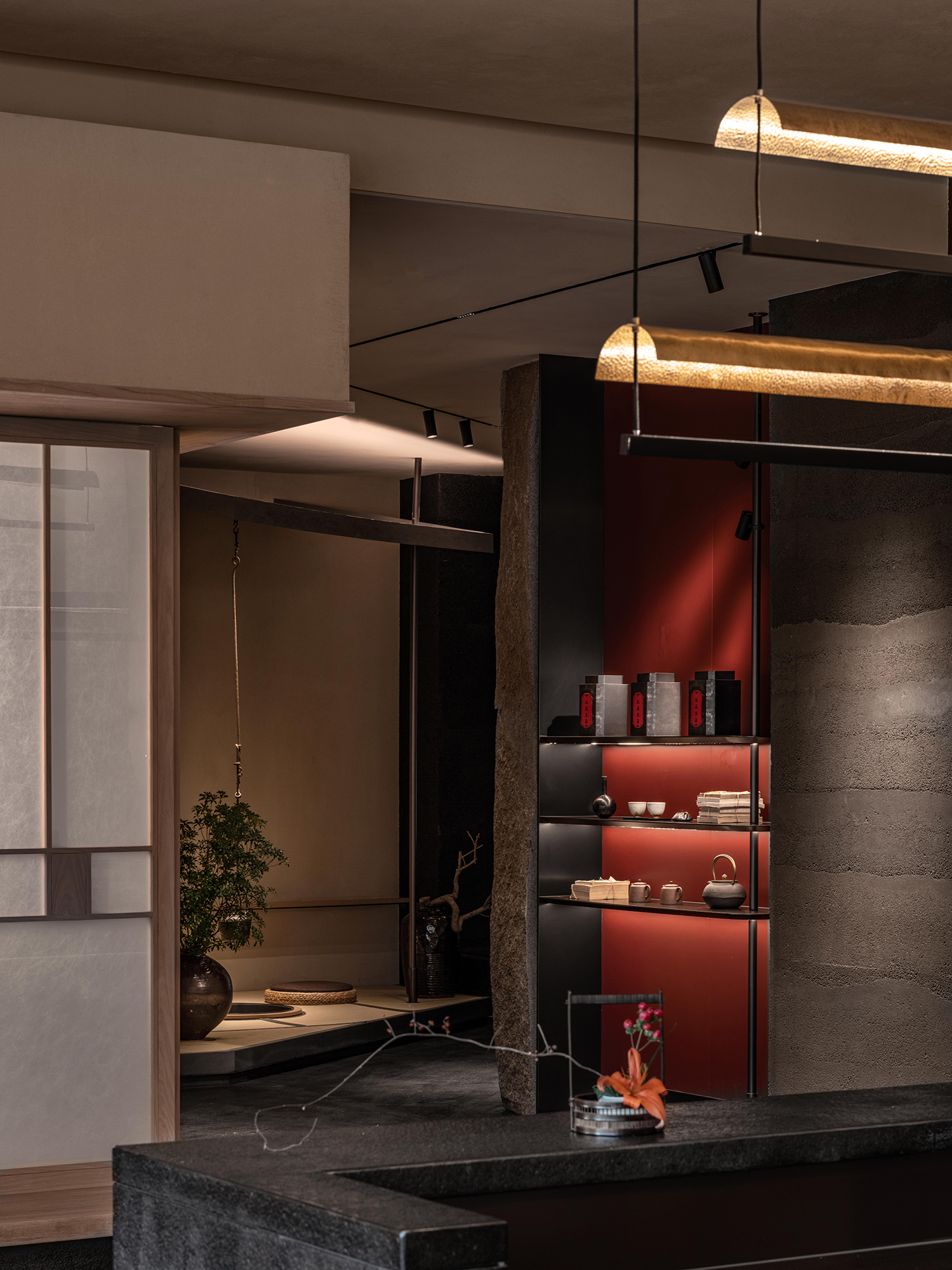
空间在进入中央区后敞开,户外景观与天光引入,风临竹石、水波浮动。多个茶事场景替代传统空间分区——茶室、环形沙龙吧台、临窗散座、茶艺展区。古人流觞曲水,今人受限于都市,所以更依赖物做观想,在室内做可看可游的空间山水。
With outdoor landscape and natural light, the space, featuring bamboo, rocks, and water landscapes, becomes more spatial after the central area. The conventional space layout is replaced by functional divisions including tea rooms, a loop tea counter, window seats, and tea ceremony exhibition area. Unlike the ancestors who were close to the nature, people in the modern era are confined to the city life and have to rely more on indoor landscaping for enjoyment and relaxation.
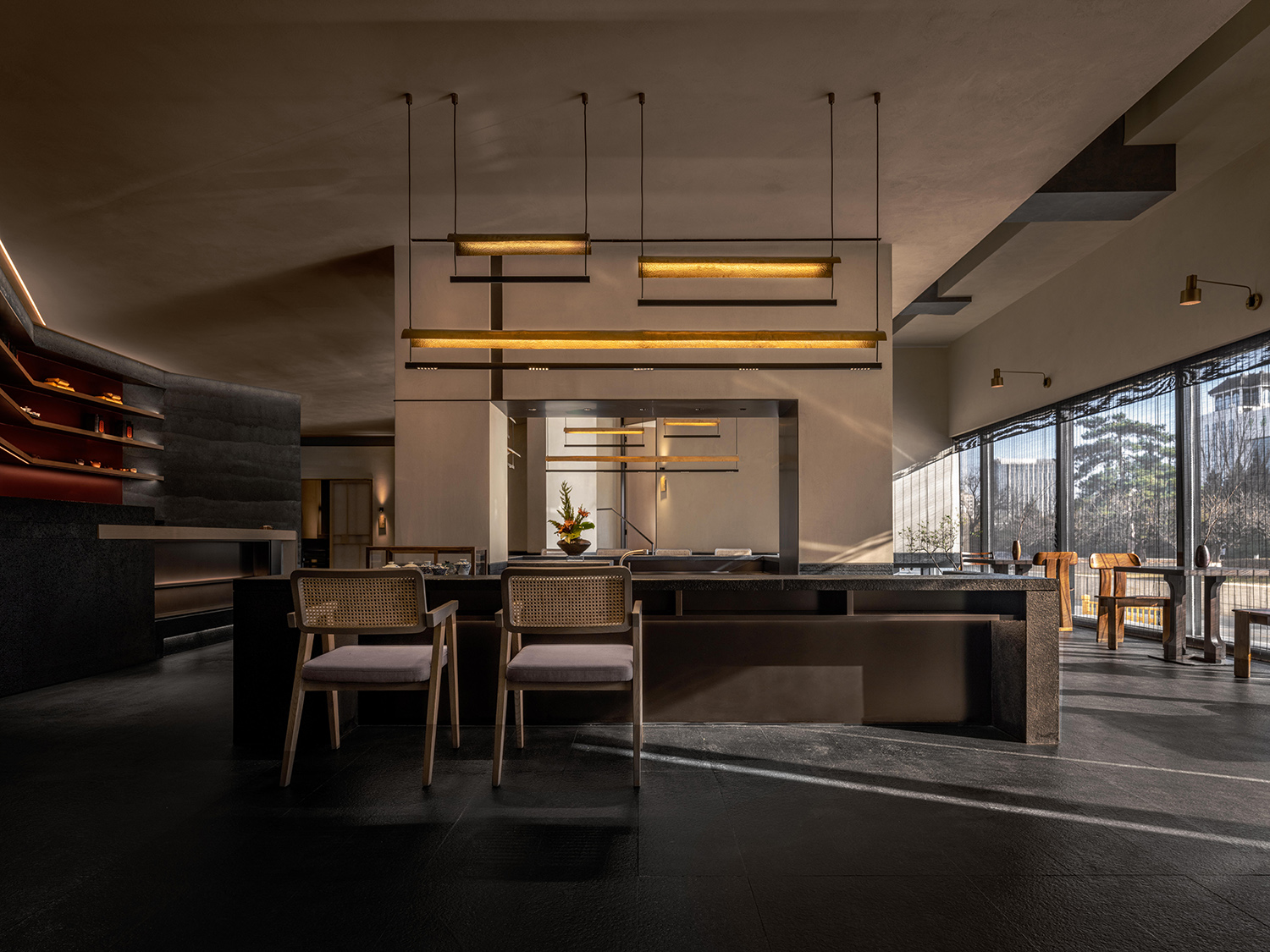
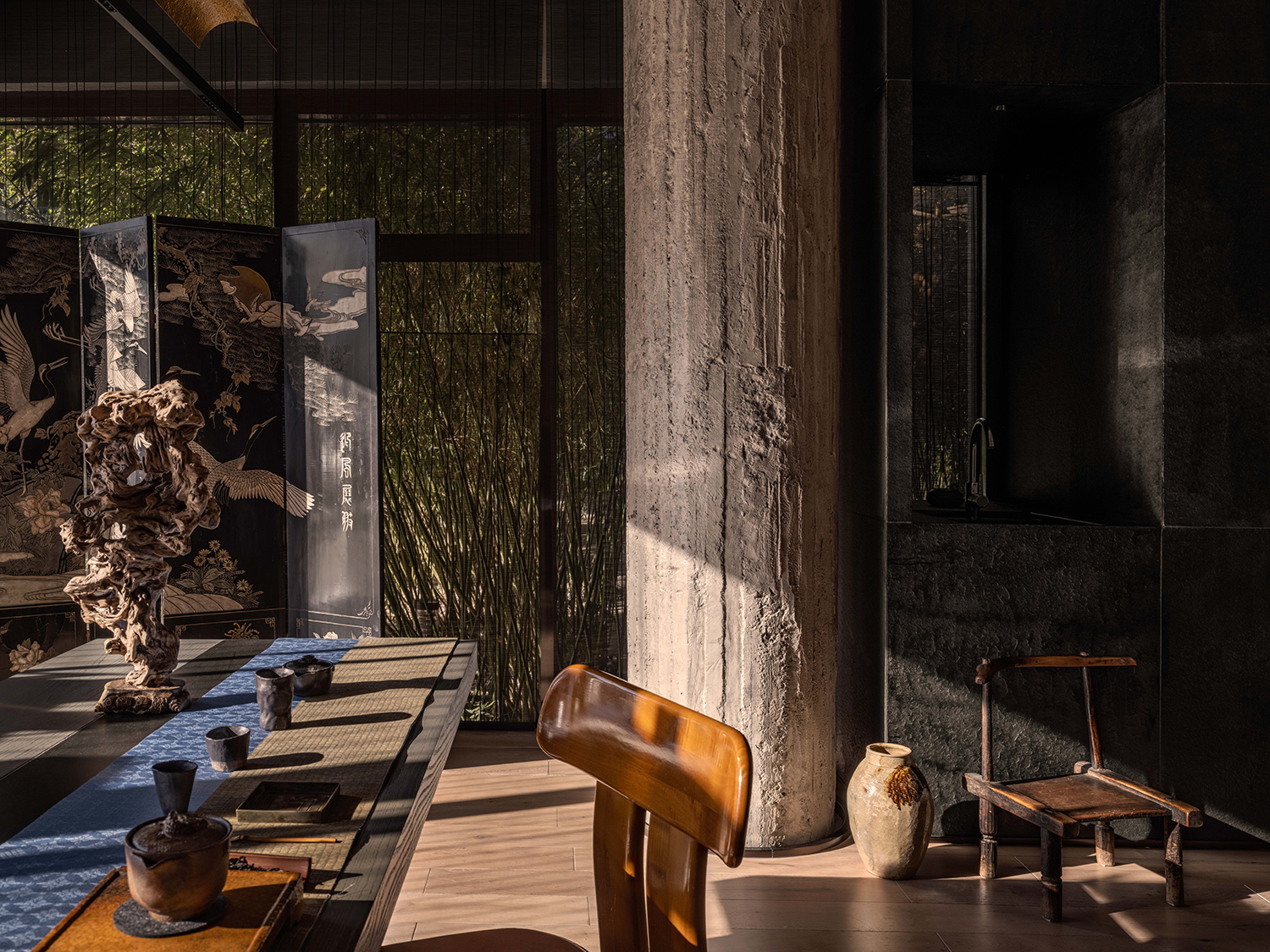
茶室命名——天枢、天璇、天玑、天权、玉衡、开阳、摇光——源于道教中北斗七星君。室内将传统茶席与现代商务社交需求结合,以开窗连通户外天光。材料轻重虚实相谐;器物选择遵从“材美而坚,工朴而妍”;茶席、方桌、墙面、屏风皆做“山水自然”的设计,这是古今中国人不言自通的精神先验。
With the names of the tea rooms-Dubhe, Merak, Phecda, Megrez, Alioth, Mizar, and Alkaid-being originated from the Big Dipper in Taoism, the rooms are designed to meet the demands of business and social networking in the modern era. The window allows the natural light to come in, and both heavy and light construction materials are used; the selection of utensils follows the principle of "beautiful and durable with simple workmanship"; tea seats, square tables, walls, and screens all bear elements of the nature, which embodies the spiritual pursuit of Chinese people both in ancient and modern times.
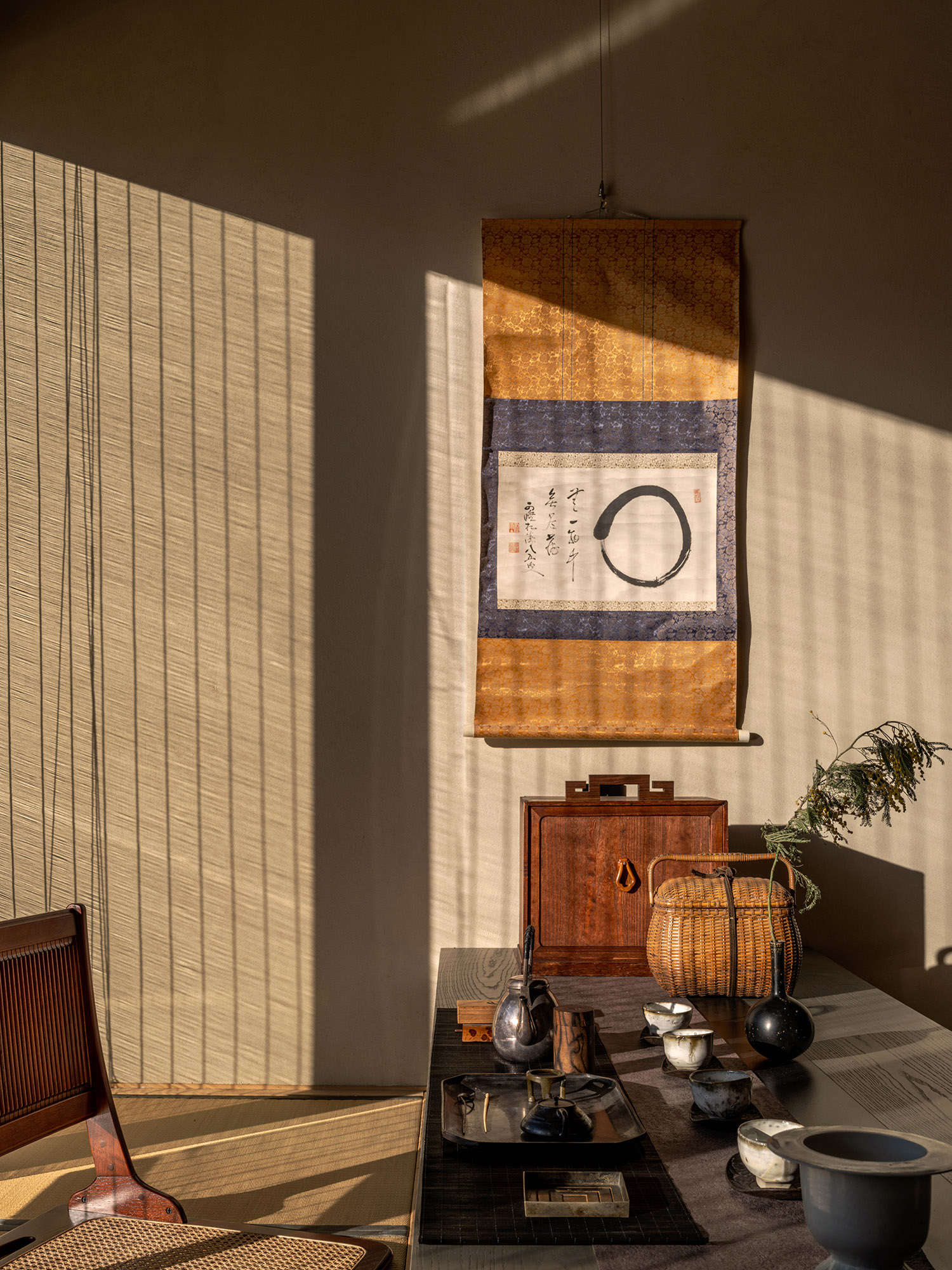
一杯茶的外延如同涟漪层层荡开,志同道合的人进入、产生交集,空间便有了社交属性——茶事可玩、山水可爱、雅俗可通,一个当代化的茶空间鲜活蓬勃起来。
The significance behind a cup of tea can render a ripple effect, allowing for like-minded people to connect and make their paths crossed. That will also add to the social attribute of the tea house—tea tasting is fun, natural landscape is lovely and the space is designed for all, so much so that a modern tea house is turned alive.
策略为先,设计为后:泛餐饮的力道
Business Strategy Over Design: The Power of a Hospitality Space
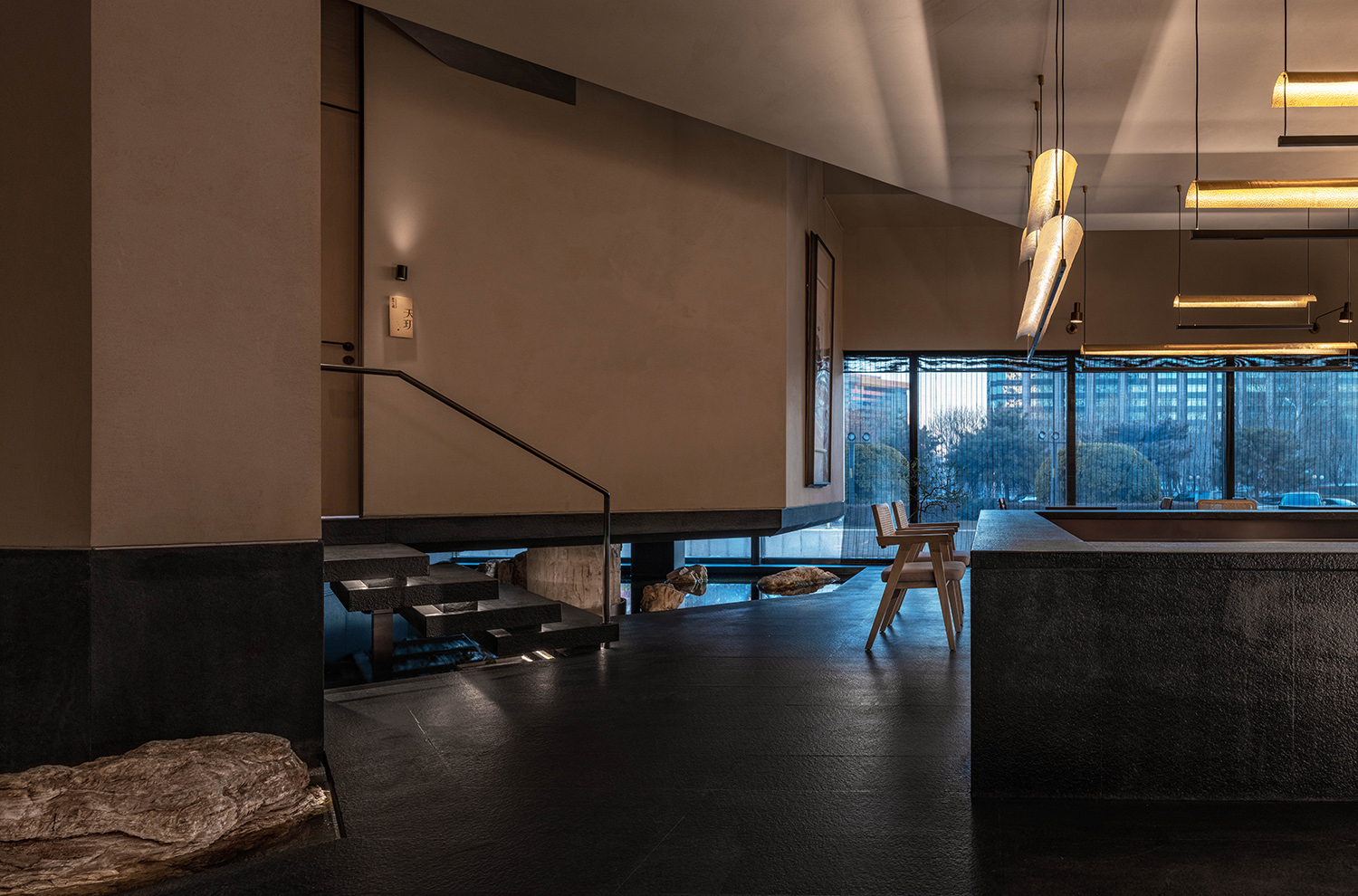
一番回溯,中国茶文化总有难以穷尽的历史可考,但终归是自由自在的,它与我们山水、人文、市井的紧密关联使得这个具有现代性的融合空间格外恰当。宇宙的尽头是复古,茶事的源远历史也会让它在现代更加灿烂、富于激情。
In addition to the emotions, mundanity, and spirituality inspired by a small bowl of tea, Wushuang · Sip Tea also meets the complicated life and social needs of the contemporary people. In this regard, the design of a hospitality space is more of an exploration of future living scenes, based on which the design strategy implemented by IN.X Space Design turns Wushuang · Sip Tea into a cozy, functional and trendy tea space.
以小小一碗茶为圆心所激发的格物情、烟火气、精神性以外,更契合了当代人复合型的生活和社交需求。从这个角度看,泛餐饮空间的设计更是在探索未来生活图景,屋里门外的设计策略以此为出发点,去推动一场既自在悠然,又便捷时髦的无双茶事。
Looking back, Chinese tea culture, characterized by liberty and carefreeness, always has an inexhaustible history to explore. Its close association with nature, art, and the earthly life has made Wushuang with its modernity even more appropriate. As the end of the universe is renaissance, the long history of tea culture will enrich and enliven the modern space.
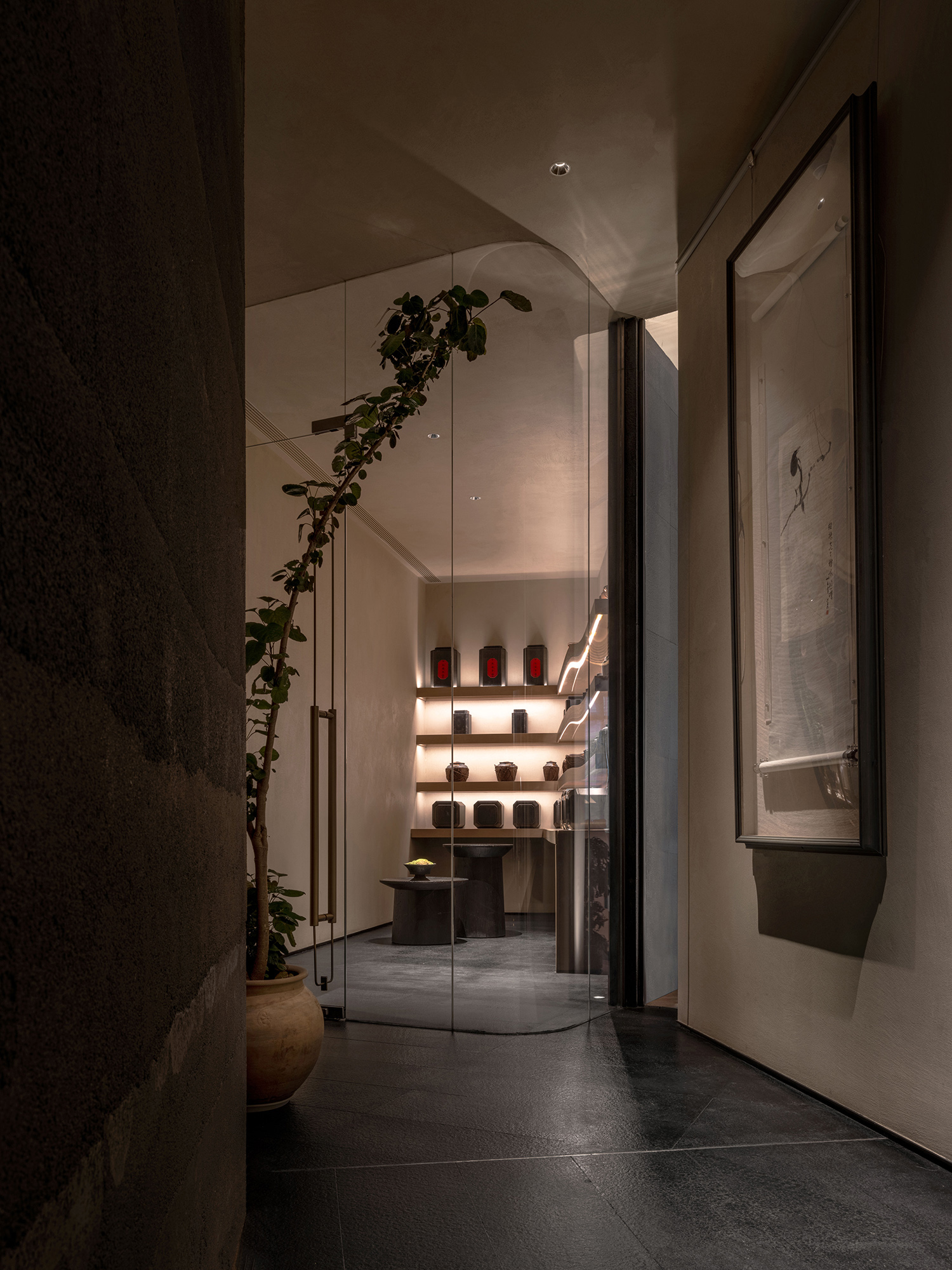
项目信息
Project Information
项目名称|無雙·茶事
Project Name|Wushuang · Sipping Tea
项目地点|中国 北京国际饭店
Project Location|Beijing International Hotel, China
项目面积|580㎡
Space Area|580㎡
室内设计|IN.X屋里门外设计
Interior Design|IN.X Space Design
设计主创|吴为
Chief Designer|Wu Wei
设计团队|刘晨阳 贾琦峰 马锐鑫 贾辰娟 宋江丽 应哲光
Design Team|Liu Chenyang, Jia Qifeng, Ma Ruixin Jia Chenjuan, Song Jiangli, Ying Zheguang
陈设支持|回到二十世纪
Decoration|Back to the 20th Century
室内景观|荒野植物园
Indoor Landscaping|Botanical Garden in the Wildness
灯光设计|朱海燕
Lighting Design|Zhu Haiyan
项目摄影|Boris
Photography|Boris
扫描二维码分享到微信